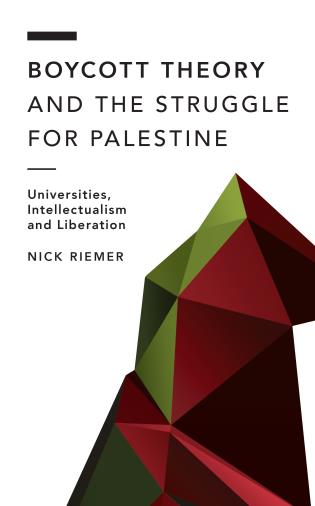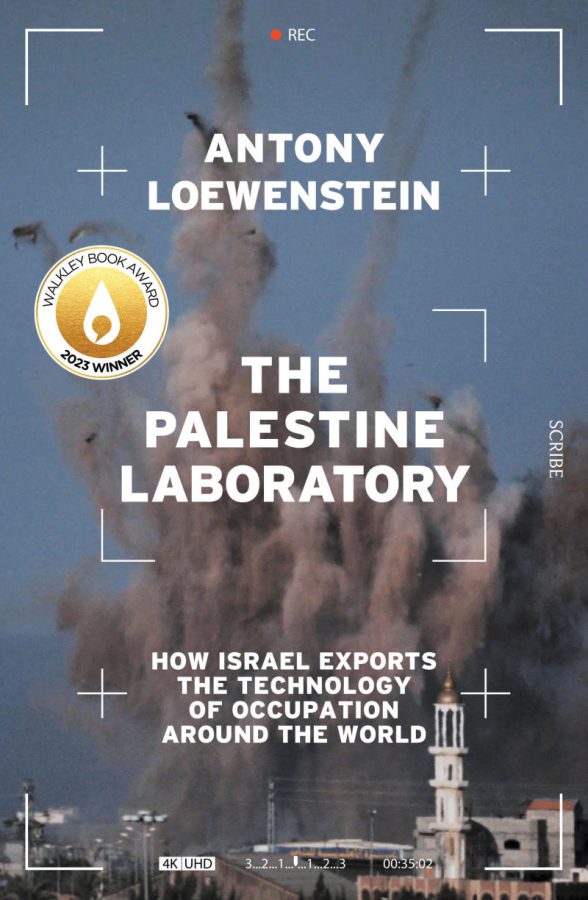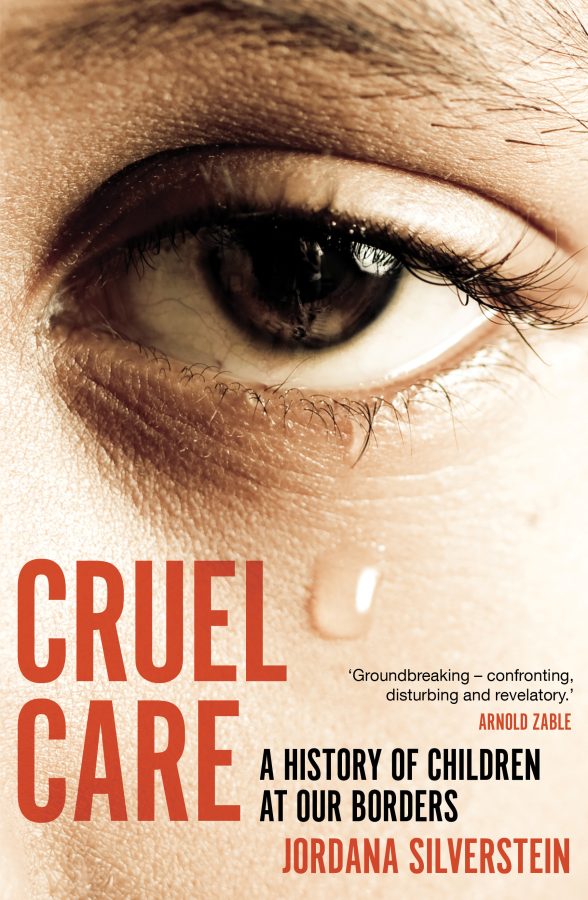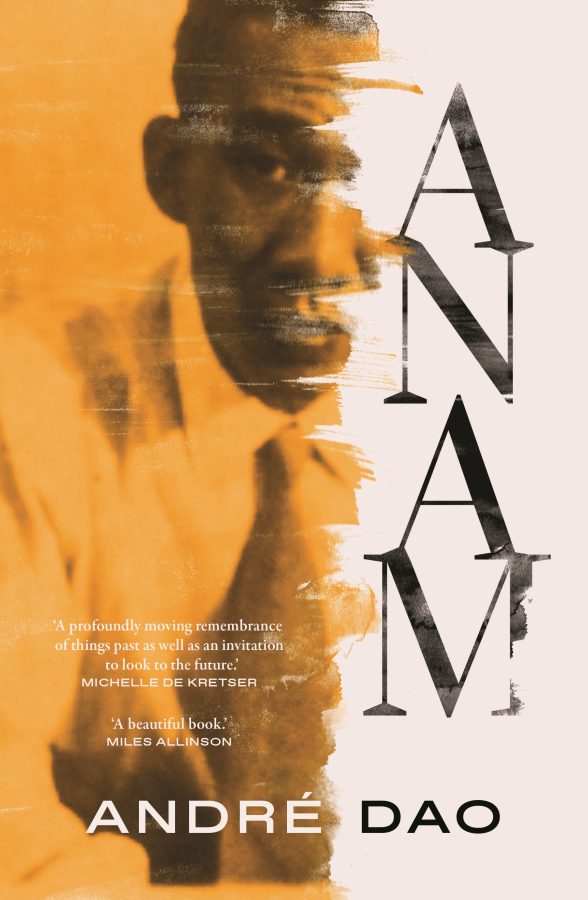National cultures are inevitably linked to versions of national identity and identity and difference are tricky concepts to bring into proximity. This essay looks at these questions in relation to temporality and the ways in which cultural studies are giving it renewed attention. How might we rethink the dance of nations in the quicksands of globalisation and a disintegrating planet?
In an interview that took place in Vancouver as part of the promotion of his most recent novel, The Golden House, Salman Rushdie noted that while researching his new book he checked to see whether there was in fact a Museum of Identity, something that he had invented in the narrative. Unable to find one he was none the less sure there would be one soon. I beg to differ. There are already many museums of identity: they are called nations.
The way nations quantify and code identity is enmeshed in many ‘invented traditions’ but of course these also operate at a semi-conscious level and can be inflamed very quickly, as we are witnessing right now. In the late 1970s to the 1990s (before I left Australia for Canada for the second time) I tried to use the institutions and policies that had sprung up around state multiculturalism to argue for a change in the canonical ramifications of Australian culture—suggesting that our institutional state apparatuses (those Althusserian modes of control) should be revising the teaching and collecting of, say, Austlit. to move beyond the fixation on the Anglo-Celtic traditions that marked the field. Why not recognize and celebrate all those other linguistic and cultural traditions that were part of the fabric of this relatively young nation? I also argued for stepping back from an entrenched monolingualism in the service of English only. So when my colleagues asked – what migrant writers are you talking about?– I laboured hard with others to set up new anthologies and to produce a definitive bibliography to show the many names and texts that existed here in English as well as in many other languages. I also raised the money to collect and house these texts—many were freely donated as part of the process of producing the bibliography but sustaining a library collection required funds. There was a backlash to all this work and it made me more receptive to eventually migrating once again back to Canada.
To speak to the title of this symposium, canonical Australian culture has changed over the last few decades, for example, in recognizing and celebrating Indigenous contributions. And things have also changed in relation to contributions from other traditions through the advent of important enterprises such as Ivor Indyk’s Giramondo Press (other small publishers before it—vanished with no trace). I was also thrilled to encounter the shortlist for the Stella Prize, bristling with new authors. But there is always room for more change. That is why I wrote a passionate and uncivil (my Canadian colleagues were shocked by the tone) response to a review of Antigone Kefala’s latest book of poems, Fragments, last year. It was prompted by what I felt was the familiarity and persistence of the stereotyping of Kefala’s work (and those other writers defined by a dubiously invoked ethnicity) that I had been tracing and trying to challenge for decades. Some of this has come through simple comparison—I have now been immersed in the culture of another settler colony that has changed much more rapidly and significantly over the last few decades (but then it began by recognizing two foundational national languages). But there is another dimension to all my soul searching over the years. It has to do with the rise of both valid and invalid scrutiny and critique of ‘cultural difference’ as a category in critical theory and the way it has translated into policy and the current nationalisms.
The best summary of how this ‘difference’ has been taken up in destructive ways is given by Aleksander Hemon’s brilliant The Book of My Lives. In the opening pages Hemon describes growing up in Sarajevo and how he had inadvertently destroyed the dynamics of his childhood gang by calling one of them a ‘Turk’ as a joke, not realizing until much later that this was a term for labeling a Bosnian Muslim. Arriving in Hamilton Ontario in the 1990s Hemon and his family dealt with being in a ‘cold climate that was extremely unfriendly to randomly warm human interactions’. Remember that Canada is the place where state multiculturalism was invented and is now perceived as a haven of tolerance, in part because of the contrast to its nearest neighbor. As Hemon goes on:
the need for collective self-legitimization fits snugly into the neoliberal fantasy of multiculturalism, which is nothing if not a dream of a lot of others living together, everybody happy to tolerate and learn. Differences are thus essentially required for the sense of belonging: as long as we know who we are and who we are not, we are as good as they are. In the multicultural world there are a lot of them, which ought not to be a problem as long as they stay within their cultural confines, loyal to their roots. There is no hierarchy of cultures, except as measured by the level of tolerance, which, incidentally, keeps Western democracies high above everyone else.
Hemon then describes the workings of self-othering and nostalgia in the stories migrants tell themselves. In Australia Brian Castro has many fine things to say of a similar kind and Ghassan Hage’s description of ‘ethnic caging’ (as for example in a zoo) makes comparable points to Hemon’s. So this area of critique comprises the ‘identity theft’ of my title. Enforced differences amount to identity theft. In Gayatri Spivak’s words, ‘Everything is susceptible to exchange, but commodity is something made for exchange. Identity as commodity’. Rey Chow calls the process ‘coercive mimeticism’. But let me go back to what I’ve been trying to do over the last 45 years.
My book appeared a year ago and I titled a recent talk about it ‘Uncomfortable Cosmopolitanism.’ The book looks at the ways in which cosmopolitanism and multiculturalism were entangled and took the line that far from being at home everywhere, the neo-cosmopolitan was at home nowhere or knew that she was uncomfortable everywhere — this was her dubious reward. It kept you on your toes. The book is titled Post-Multicultural Writers as Neo-Cosmopolitan Mediators –– I should explain that the actual title I had requested (Back to the Future) was decapitated by the publisher for marketing reasons and what search engines would find. What I tried to do in this book is move my emphasis from space to time –– the original title would have helped signal this approach.
Why was I doing this? Multiculturalism has, arguably, been fixated on the spatial — leaving places; arriving at places or being prevented from arriving. For example, Canadian author Sharon Bala’s The Boat People brings together the 2008 arrival to Canada (on my doorstep in British Columbia) of 500 Tamil Sri Lankans fleeing that civil war and the internment of Japanese Canadians during the second world war. She used this conjunction to speculate about when, once one is perilously perched in a new place, it stops being provisional and what kinds of filaments and networks one establishes with others who offer the comforts of the familiar –– before one gets labeled a ghetto and accused of harbouring or generating unnatural/un-national conspiracies? Remember that citizenship ceremonies are called naturalization processes. The ghetto that is created for migrants is an amalgam of essentialist properties projected onto unfamiliar figures, indeed, it functions like a mini-nation within a larger nation which in turn generates terms (anti-bodies) meant to ‘repair’ it such as integration, assimilation — turning unlike into like; turning the supposedly rootless and unmoored into acceptable residents –– a violent process on many levels. In his final published essay, Zygmunt Bauman cited an essay by Umberto Eco to emphasise crucial distinctions among immigrants, emigrants and migrants: the first leave and then arrive (knowing where one wants to go) whereas the last, the migrants, are those who know they must leave but have no idea where to go.
The phenomenon of immigration may be controlled politically, restricted, encouraged, planned, or accepted. This is not the case with migration. Violent or pacific as it may be, it is like a natural phenomenon: it happens, and no one can control it.
In response, Bauman offers a warning:
On a planet crisscrossed tightly by trade routes and information highways, we guide our thought and actions by the precepts inherited from the era of territorial sovereignties, moats, drawbridges, stockades, barbed wires, ad hoc coalitions, and walls… It is high time and perhaps a matter of our shared life and death to face up to the complexity of our common existential condition…
An excellent illustration of the phenomenon of ‘migration’ is Ai Weiwei’s brilliant film The Human Flow (2017) where he consistently manages to convey the tension between the ‘multitude’ and their individual humanity. Researchers in the field of migration studies have also been recently influenced by Dana Diminescu’s important concept of the ‘connected’ migrant as opposed to the deracinated migrant in the sense that technology, even at its most basic, enables the maintenance of far-flung and proximate connections: the digitally networked but eternally mobile figures who perch where they can for as long as they are able in order to create a cluster based on family or other extended configurations of the virtual settler. Within those simultaneities, time functions in parallel delineations: family time; the time of specific wars or other disasters; histories—public and private, and so on.
As a way of framing this multiplicity of temporalities in my book, I had gestured towards a family history (a mix of German and Bulgarian) that was hidden in the chaos of documents surviving in my parents’ archives which I linked to archives elsewhere as well as to the parallel quests followed by other researchers. My book’s guiding principle is that we need to move beyond the monolingual paradigm that prevails within Anglophone literary studies. Using Lyotard’s concept of ‘post’ as the ‘future anterior’ (back to the future) the book sets up a concept of post-multiculturalism that goes back to salvage the elements within grassroots multiculturalism that have been forgotten in its contemporary denigration. This discussion is attached to debates in neo-cosmopolitanism over the last decades to create a framework for re-evaluating post-multicultural and Indigenous writers in settler colonies such as Canada and Australia. These writers are in turn linked with transnational writers across diasporas from Eastern Europe, China and India to raise new questions for literary and cultural studies in relation to the unruly dynamics attached to migration, belonging and forging new attachments.
The book provides an overview of concepts in the field of literary and cultural neo-cosmopolitanism (the ‘neo’ signals a non-elitist cosmopolitanism from below and one that assumes non-Western co-ordinates—not your usual suspects) and demonstrates their usefulness in re-interpreting notions of the spatial and the temporal to create a new cultural politics and ethics that speak to our challenging times. The neo-cosmopolitan debates have shown how we are more connected than ever (as Bauman reminds us) and how groups and geo-political areas that were overlooked in the past need to be brought to the centre of our cultural criticism so that we can engage more ethically and sustainably with global cultures and languages at risk.
Writers such as Christos Tsiolkas, Brian Castro, Ouyang Yu, Yasmine Gooneratne, Maxine Béneba Clarke, Antigone Kefala and Kim Scott from Australia are juxtaposed with Canadian writers such as Shani Mootoo, Anita Rau Badami, Ann Marie Fleming, Kyo Maclear and Tomson Highway and connected to ‘other’ Europeans such as Dubravka Ugresic, Herta Müller (a recent Nobel prizewinner whose writings straddle Rumania and Germany) and Fiona Tan (a visual artist born in Indonesia, raised in Australia and now based in Amsterdam). The book analyses diaspora texts by Xiaolu Guo, Ruyan Xu, and Wang Gang from China and the Chinese diaspora within neo-imperial globalization where global English often functions as metonym for Western values. By introducing the acoustic ‘noise’ of multilingualism (accents within writing) in relation to the constitutive instability within monolingual English studies the book shows that within global English diverse forms of ‘englishes’ provide routes to more robust recognition of the significance of other languages that create pluralized perspectives on our social relations in the world. So I’m emphasising the idea that cosmopolitanism means not that one is at home everywhere in the world but that one is uncomfortable everywhere in the sense that one is aware of what has been camouflaged in order to produce a veneer of belonging and, of course, how thin this veneer is.
Space-Time-Ships
But what I’d like to do now is to meditate a little on boats and how they move in time as well as between spaces. This aspect of my talk has to do with the Symposium title’s referencing of Coleridge’s poem ‘The Ancient Mariner’ and so I’m taking up the mariner’s position to force my account on you. In the framing of that poem the ancient mariner buttonholes a wedding guest who is eagerly on his way to attend a celebration. The old man’s tale is punctuated by the sound of the wedding festivities—an uncomfortable situation indeed where one kind of time is arrested and another time creeps in. I’ll be dealing not just with boats that arrive, such as the settler colonisers in Australia or the former cattle ship that, under the auspices of the IRO (International Refugee Association), transported my parents, my 4-year old self and 2- year old brother (my mother being pregnant with my youngest brother, the only one born in Australia). Amongst the little luggage they were permitted to carry my impractical parents carted a trunk filled with German books. No wonder I have revered books ever since (and, of course, have a fetishistic relation to them—they stand in for many things). We know that boats are forms of spatiality, containers that transport you from one place to another and one state to another. We think of the mythical ferries that take one to an afterlife and arguably the boats of migration may take you to another space but they also carry with them another time or time-place. Hemon’s text suggests that we don’t simply exchange one life for another; how we live in that other place remains with us—that we carry those left-behind temporalities with us. They continue to haunt us, for example, through the languages that we associate with the other place. The fanatical adherence to English monolingualism in Australia, for example, might be associated with the continuing fear of having been (continuing to be) cut off from a fervently imagined but phantasmatic mother country where it seems our real lives continue to unfold.
What about the boats that never arrive? This was a question asked by my colleague Michelle O’Brien who is working on this theme. In terms of recent global history, one of the most horrifying examples was the St. Louis, with over 900 Jewish refugees who were refused landing in Cuba, the USA and Canada in 1939. One third went on to die in the Holocaust. In Australia the Tampa, a Norwegian ship filled with refugees from Afghanistan was turned away in 2001 and marked the beginning of particularly horrific treatments of refugees and asylum seekers. In 2001 there was of course also the SIEV X where 353 died (146 children and 142 women). In Canada, one of the ways in which the country belatedly recognizes its marginalized groups is through another boat story called the Komagata Maru—one of the themes in Bala’s text mentioned earlier.

This was a boat of 376 immigrants (mostly Punjabis from Raj India and thus British citizens) who in 1914 were denied entry to Canada (again on my doorstep) and left to languish for two months under increasingly deteriorating circumstances. After being denied entry nineteen returned to their deaths. The Komagata Maru was not permitted to land but has become something of a rallying point for Canadian Sikhs, including those who are now prominent politicians. Harjit Sajjan is the current Canadian Minister for Defense and Jagmeet Singh is the current leader of the NDP (New Democratic Party). Why am I mentioning this? Because both have been subjected to the kinds of slurs in the press familiar to those perceived (at certain moments) as having links to ethnic minorities and therefore being very quickly defined by those imagined ethnic affiliations. In other words, that their nationalist loyalties were always already suspect. So here we have another example of the ‘identity theft’ of my title. It has been educational to observe those slurs against Jagmeet Singh occurring in the daily national papers—that he is suspect on the basis of, at a younger age, attending Sikh rallies that may have featured a portrait of a supporter of the Sikh separatist Khalistan party. It’s like saying that an Australian politician with Irish antecedents attended an Irish Australian rally that may have featured a reference to the IRA. In the Museum of Identity that is Canada, even Canada, it does not take very much for one to be suddenly cast into that murky den of conspiracy that culminates in accusations of potential terrorism. And even though Canada is not an island continent like Australia, there is a comparable hysteria connected to the arrival of boats. That hysteria is given an unexpected twist in Felicity Castagna’s No More Boats. Perhaps this excessive affect has something to do with the symbolic resonance of boats themselves: because they are spatially unmoored; because they also carry a suspect temporality. This is illustrated in a well known recent example, Nam Le’s short story ‘The boat’ (where the boat arrives in the sense that it is surrounded by land birds as the small and dehydrated body of Truong is consigned to the surrounding sharks––representative of those for whom the boat never arrives).
In terms of my 4-year old self already enmeshed in German and able to read, while of course I was young enough to forge a self in English very quickly there was always the ghostly self that was intermittently present in another temporal framework, one that I recovered (or invented) to some degree when I returned intermittently to Germany. There was another parallel self I encountered in both German and English (but alas not Bulgarian) during my visits to my father’s country. Temporal selves created in other circumstances intrude in unexpected ways.
Mireille Eid Astore is an Australian artist who arrived from Beirut in 1975 (around age 14).

In the blurb on her website about the performance of her piece ‘Tampa’ (2003), Astore describes it as both sculpture and performance in which she arrived every day with her suitcase and stayed inside the sculpture from 10.00 am until 6.00 pm.
The ‘point of view’ of the caged was central to the performance. The inversion of the gaze as an exploratory tool and an illustration of the active versus passive vision of the incarcerated were critical to the outcome. As such, each day at 10 am, 12 pm, 2 pm and 4 pm, I took photographs from within my prison and placed them on this website.
In her essay ‘When the artwork takes the pictures’ Astore speaks more about this process of returning the gaze by listing some of the responses she received. Silent herself throughout the process she was asked such questions as ‘Do you speak English?’ or ‘When are you going to get your permanent residency visa?’.
But let me turn finally to another image that has haunted me for many years and resonates with

boats in the sense that they transport us in time as much as space, Hossein Valamanesh’s ‘Longing Belonging’ (1997). Here is a blurb about this piece from the Art Gallery of NSW, where it is held:
In ‘Longing belonging’, a photograph by Rick Martin of a Persian carpet burning in the Australian mallee scrub is presented behind the burnt carpet itself. This improbable event (the burning of the carpet) in an improbable place (desert scrublands) embodies the desires and disjunctions of finding oneself in a new land and integrating into an alien landscape…
The carpet suggests Iranian cultural traditions. Carpet designs are often of stylised flowers and fields, a landscape of the imagination. The carpet is partially consumed by fire in an arid landscape that has been shaped by fire over many thousands of years. This work embodies a sense of trying to locate cultures and the inherent violence of this process, of substituting one way of living for another and of the need to give up part of oneself in order to adapt to a new life. However, the flame is also cleansing; it suggests new possibilities. In burning through the central medallion of the carpet, it has left a dark and velvety void rather than just desiccated soil, a place of possibilities and imagination.
Mary Knight (in the monograph published on Valamanesh’s work) points out that the burnt carpet was woven by a nomadic tribe. As Derrida (via Spivak) reminds us, in his text Glas, the navette or weaving shuttle, takes the form of a boat, so perhaps boats and carpets are kindred. They are of course more lightheartedly connected through the flying carpets of orientalist traditions and here, once more, time is a passenger. The violence of the burning recalls as well Suvendrini Perera’s heartbreaking essay on Tamil Sri Lankan refugees who when denied a visa immolated themselves in response:
Over the next twenty-four hours, Leo Seemanpillai’s harrowed body continued to weep its raw agony, suspended between life and death, while his few undamaged organs were harvested, according to his prior request. (Leo was a regular blood donor, a volunteer at the local church.)
Their organs are patriated (naturalized) after the ‘unnatural’ bodies have been eliminated ––burning refugee boats and burning carpets connected by a shuttle; boats and shuttles that may not complete their processes. Identity conferred in analyses of ‘ethnic’ writers often amounts to identity theft where identity is relegated to being a commodity. What if we fasten on Valamanesh’s burnt carpet in the Australian scrub as a vanishing point that opens up onto another model of translation and critical analysis?
Arrival is not what it used to be and I’ve been arriving in Australia annually for many years. Perhaps the underlying assumption is that if we prevent others from arriving this means that paradoxically and perversely we have arrived. That is my concluding provocation.
Works Cited:
Mieille Astore, ‘When the artwork takes the pictures,’ Law, Text, Culture, 2006.
Sharon Bala, The Boat People, Penguin Random House, 2018.
Zygmunt Bauman, ‘Between separation and integration: Strategies of cohabitation in the era of diasporization and Internet,’ Popular Communication: The International journal of Media and Culture, 16.1, 2018, 1-3.
Felicity Castagna, No More Boats, Giramondo, 2017.
Rey Chow, The Protestant Ethnic and the Spirit of Capitalism, Columbia University Press, 2002.
Dana Diminescu, ‘The Connected Migrant: An Epistemological Manifesto,’ Social Sciences Information, 47.4, 2008.
Umberto Eco ‘Migration, Tolerance, and the Intolerable,’ Five Moral Pieces. Trans. A. McEwen, Harcourt, 2001.
Sneja Gunew, Post-Multicultural Writers as Neo-Cosmopolitan Mediators, Anthem Press, 2017.
Sneja Gunew, Lolo Houbein, Jan Mahyuddin and Alexandra Karakostas-Seda, eds. A Bibliography of Australian Multicultural Writers, Deakin University Press, 1992.
Ghassan Hage, Against Paranoid Nationalism: Searching for Hope in a Shrinking Society, Pluto Press, 2003.
Aleksander Hemon, The Book of My Lives, Farrar, Strauss and Giroux, 2013.
Antigone Kefala, Fragments, Giramondo, 2016.
Mary Knight, ‘Longing belonging,’ Hossein Valamanesh: Out of Nothingness, edited by M. Knights and I. North, Wakefield Press, 2011
Francois Lyotard, Le postmoderne éxpliqué aux enfants: Correspondance 1982-1985, Éditions Galilée, 1986.
Nam Le: The Boat, Canongate, 2008.
Suvendrini Perera; ‘Burning Our Boats’ JASAL, 15.3, 2015.
Salman Rushdie, The Golden House, Alfred A. Knopf, 2017.
Gayatri Spivak, ‘Acting Bits/Identity Talk, in An Aesthetic Education in the Era of Globalization, Harvard University Press, 2012.




